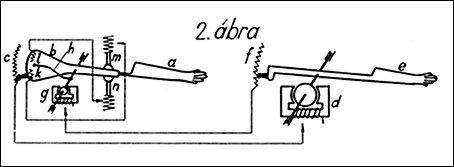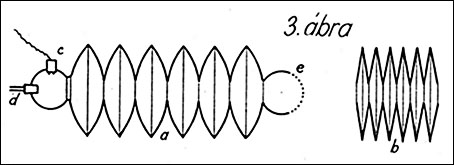.jpg)
I have very little information on Anthrophor. The images are an extract from a Hungarian patent 118554. It appears to be tele-operated.
An early Hungarian patent on a robot
by Dr. János Gács
The 118,544 Hungarian Patent was filed on 10th December 1936, by Ferenc Okolicsányi. It was based on a German application filed on 12th December 1935. The description was published in Hungary on 1st August 1938.
A tele-sensitive and tele-effective mechanism which is working by television and electro-mechanic equipments is roughly outlined in the description. The construction, named "Antrophor", would have offered solution to some tele-manipulation and telecommunication problems which were really solved only nowadays.
Further information required. My contact email address in on the bottom of the 'About Me & Contact' page.


I located the Brtish patent. The Mechanical Man's name is "Anthrophor" in English.
Patent GB486604
Convention Date Germany : Dec. 12, 1935.
Application Date (in United Kingdom): Dec. 11, 1936.
Completed Specification Accepted: June 8, 1938.
Improvements in or relating to Electric Remote Control Systems for Television Apparatus
I, FRANZ VON OKOLICSANYI, formerly resident at Nuernberg, Germany, of Thornwood Lodge, Campden London, W.8, a Hungarian subject, do hereby declare the nature of this invention and in what manner the same is to be performed, to be particularly described and ascertained in and by the following statement :-
The functions of the known distant control apparatus can be divided in two groups. The distant controlled machine can influence the outside, surrounding world, or it can pick up energies (e.g. sound) from this world to transmit it to the control station.
A certain type of distantly controlled machine is already known as a " mechanical man." Certain jobs are suitably carried out by such distant controlled machines; for instance simple mechanical movements on the occurrence of pre-determined conditions.
Practical experience however shows that when making a substitute for somewhat more complicated human activities, e.g. walking of a " mechanical man " on uneven ground, the complexity increases out of all proportion and the results obtained are imperfect.
These distantly controlled machines cannot replace the complexity of possibilities of the thinking and feeling man. For even when such equipments are provided with television, they are, under present conditions, . controlled by a number of knobs, and the accommodation and skill of the real man is lacking.
The invention to be described overcomes this by an " action and perception communication system." This consists of two parts, the control station " and
" acting device " (also called the Anthrophor in what follows) i.e. the distant controlled machine, and gives the person at the control station the feelings and sensations of being in the position occupied by the acting device, or the feeling as though the acting device were his own body, or a part of his body. In this way the dexterity of the living person is substantially increased.
Source: Wireless World, Dec 1938 p530.